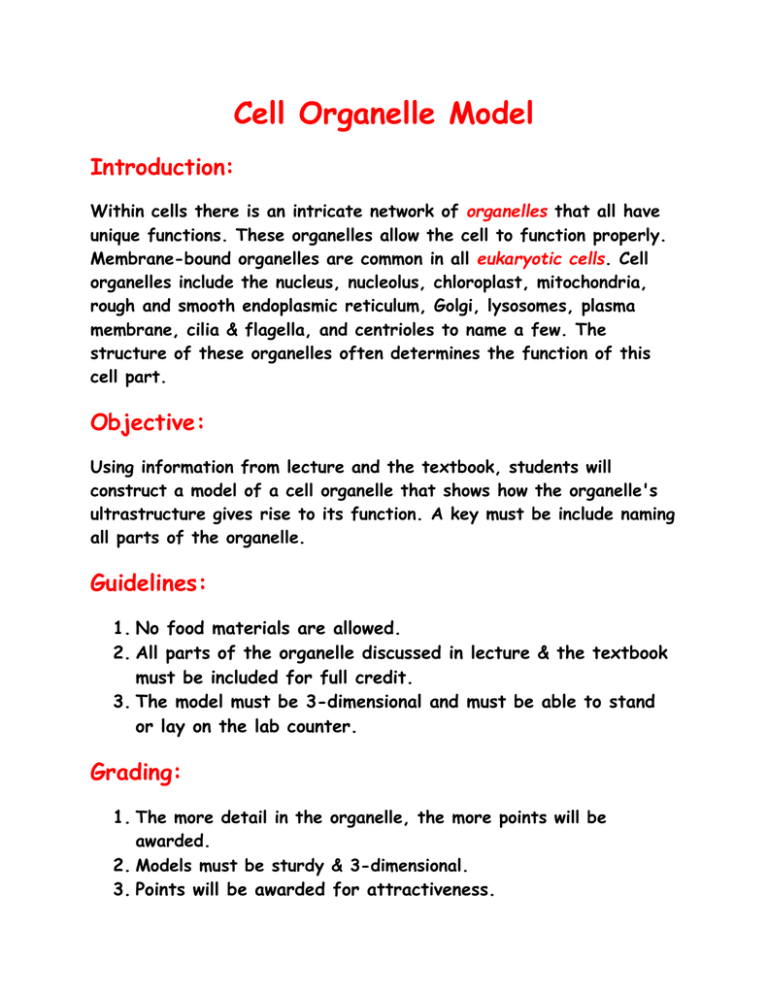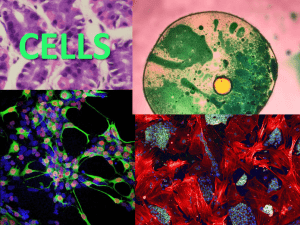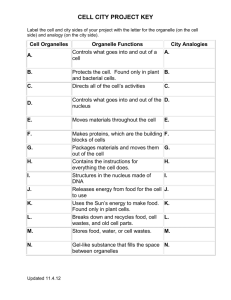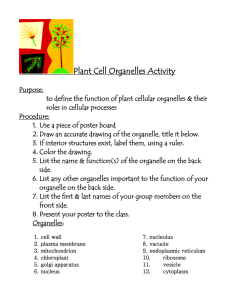Cell Organelle Model Lab Assignment
advertisement

Cell Organelle Model Introduction: Within cells there is an intricate network of organelles that all have unique functions. These organelles allow the cell to function properly. Membrane-bound organelles are common in all eukaryotic cells. Cell organelles include the nucleus, nucleolus, chloroplast, mitochondria, rough and smooth endoplasmic reticulum, Golgi, lysosomes, plasma membrane, cilia & flagella, and centrioles to name a few. The structure of these organelles often determines the function of this cell part. Objective: Using information from lecture and the textbook, students will construct a model of a cell organelle that shows how the organelle's ultrastructure gives rise to its function. A key must be include naming all parts of the organelle. Guidelines: 1. No food materials are allowed. 2. All parts of the organelle discussed in lecture & the textbook must be included for full credit. 3. The model must be 3-dimensional and must be able to stand or lay on the lab counter. Grading: 1. The more detail in the organelle, the more points will be awarded. 2. Models must be sturdy & 3-dimensional. 3. Points will be awarded for attractiveness.






